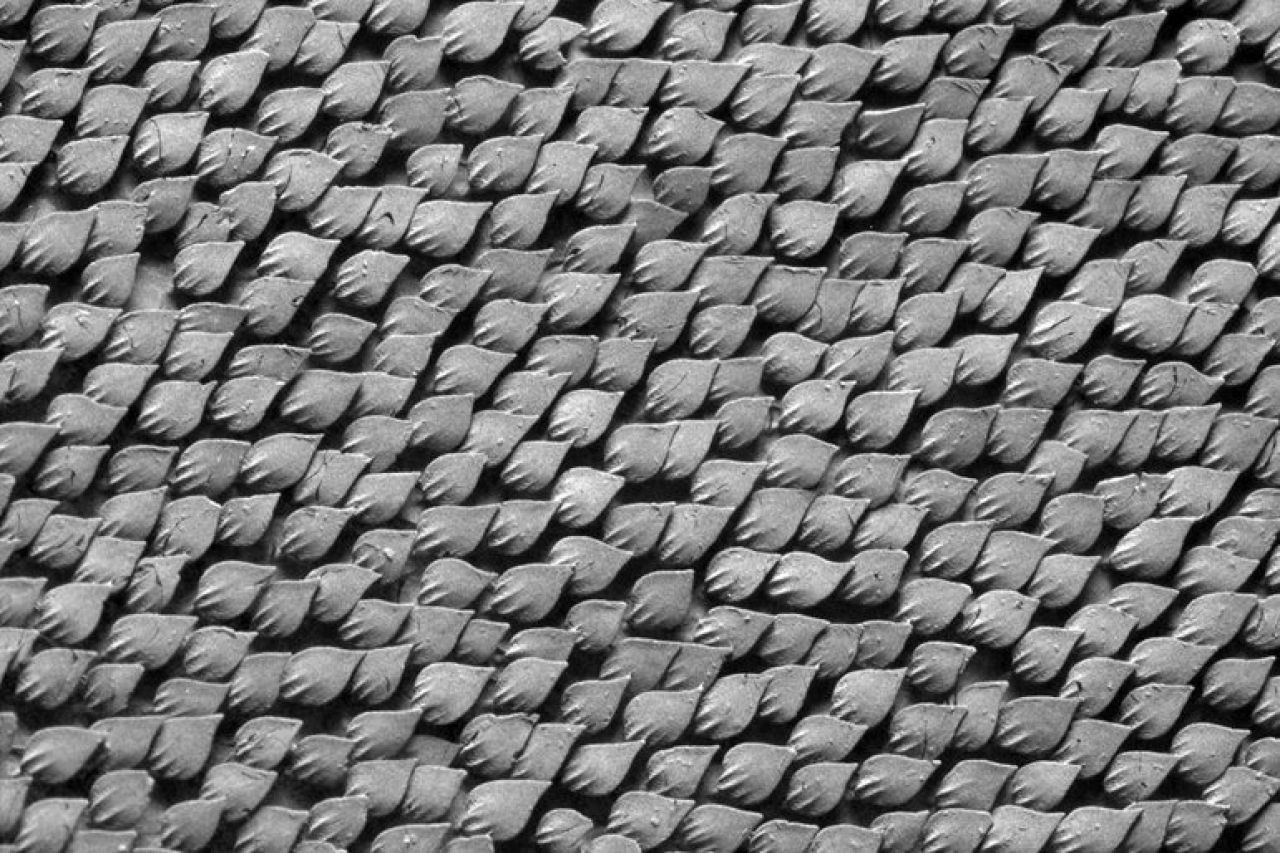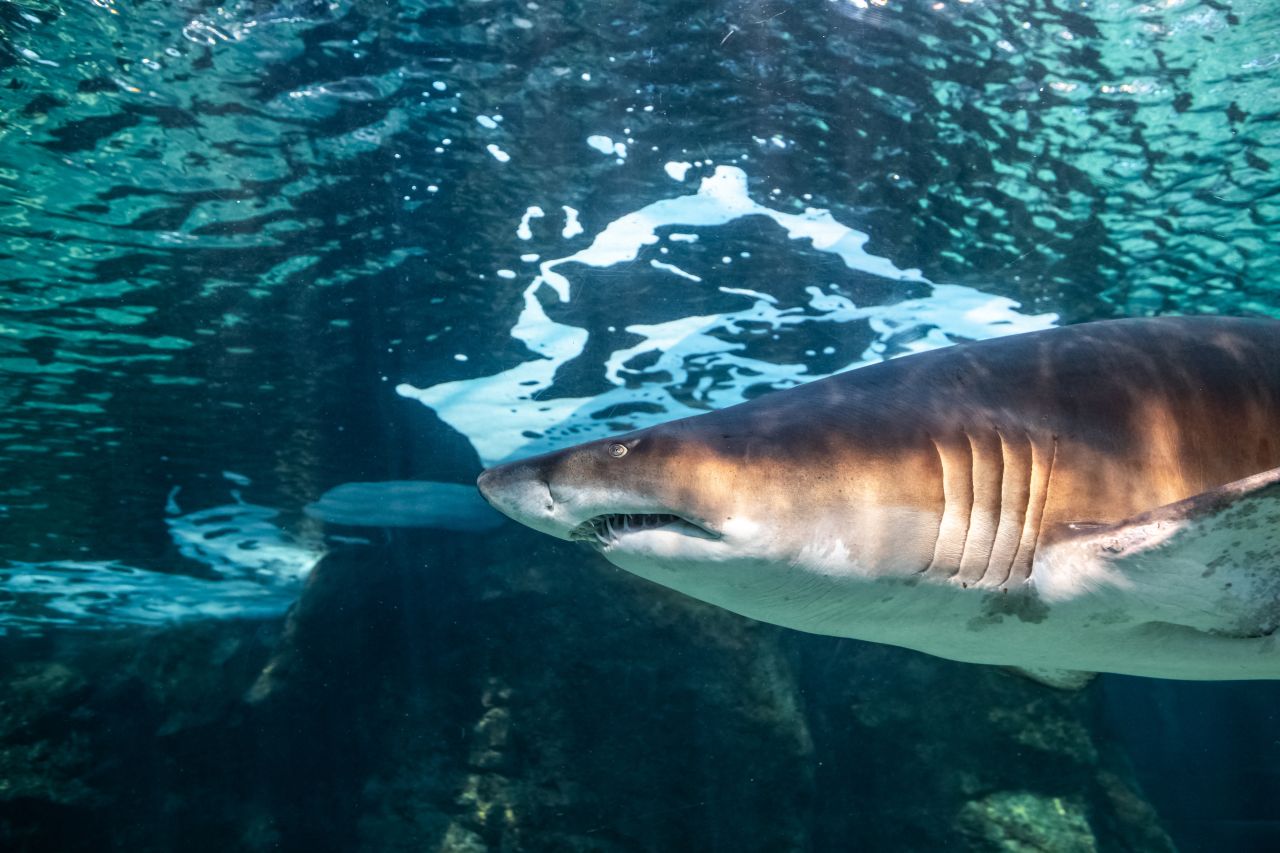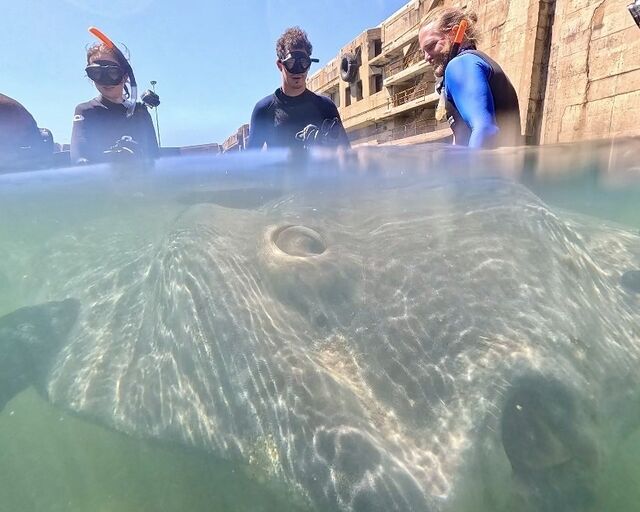Toothy textures: A closer look at shark skin!
Happy Shark Awareness Day! Shark Awareness Day is about creating awareness and inspiring compassion for these multifaceted animals.
There is much more to sharks than many people realise – today, we’re taking a closer look at their skin! So, let’s dive in.
Although the ragged-tooth sharks appear smooth and sleek as they glide through the water in the Save Our Seas Foundation Shark Exhibit, they are covered in hard armour. While bony fish have flat scales, sharks have microscopic, tooth-like scales called dermal denticles. These are also known as “skin teeth” or placoid scales. Denticles have several remarkable similarities to teeth: they are the same shape, and each denticle has a nerve ending, a core of dentine and pulp covered in enamel.
Denticles have a unique way of growing that differs from other animals’ skin. While mammals have skin that stretches as they grow, and fish scales grow larger as the fish grows, denticles always remain the same size! Instead, as the shark grows, the denticles multiply to cover the shark’s entire body.

The effectiveness of denticles…
The reason that sharks look so effortless as they move through the water is, in part, because of their denticles. Their “toothy” skin brilliantly reduces friction between the water and the shark’s body, streamlining the shark and conserving energy by minimising drag. Less drag allows the shark to slip through the water faster and easier than other fish. This is essential for apex predators like sharks that need to keep up with their prey.
Denticles are so effective at reducing drag and friction that humans apply their design to human-made articles using a practice called biomimicry. 3D printed “denticles” have even been applied to aeroplane wings to reduce drag in the air. This incredible natural design has also been applied to swimwear for Olympic athletes. However, the swimwear was almost too effective… The International Swimming Federation had to ban it from competitive use, as it provided swimmers with an unfair advantage.
Other applications for designs based on shark skin include more productive windmills, bacteria-resistant materials for the medical field, anti-fouling surfaces, and improved fuel efficiency in cars.

Sharks' skin plays a role in their reproduction!
During mating, the male shark must remain attached to the female by biting her and hanging on. Female sharks have therefore adapted tough, thick skin to prevent serious injuries. In the Save Our Seas Foundation Shark Exhibit, all the female ragged-tooth sharks have a pronounced hump on their backs which provides further protection.
Denticles are an asset to shark science!
Denticles provide a valuable database of biological evidence for the history of sharks in a particular area. As denticles fall off, they accumulate on reefs in the ocean. Scientists compile a record of the sharks’ distribution and abundance in certain areas by studying these discarded denticles. The results indicate the impact of human activity on shark populations and the surrounding environment. With the knowledge of which shark species are in a particular area, we can improve their protection.
Because denticles are living structures, their nuances and special features are still being discovered. For example, the fact that they carry blood helps sharks control their body temperature, and some small sharks use the roughness of their facial scales to hold onto their food.

There is so much we can learn from nature. Whether it's making a faster swimsuit or increasing the energy efficiency of an aircraft, sharks can teach humans more than we realise. After all, sharks have had over 400 million years to perfect their abilities – humans have barely scratched the surface of understanding these magnificent animals.




